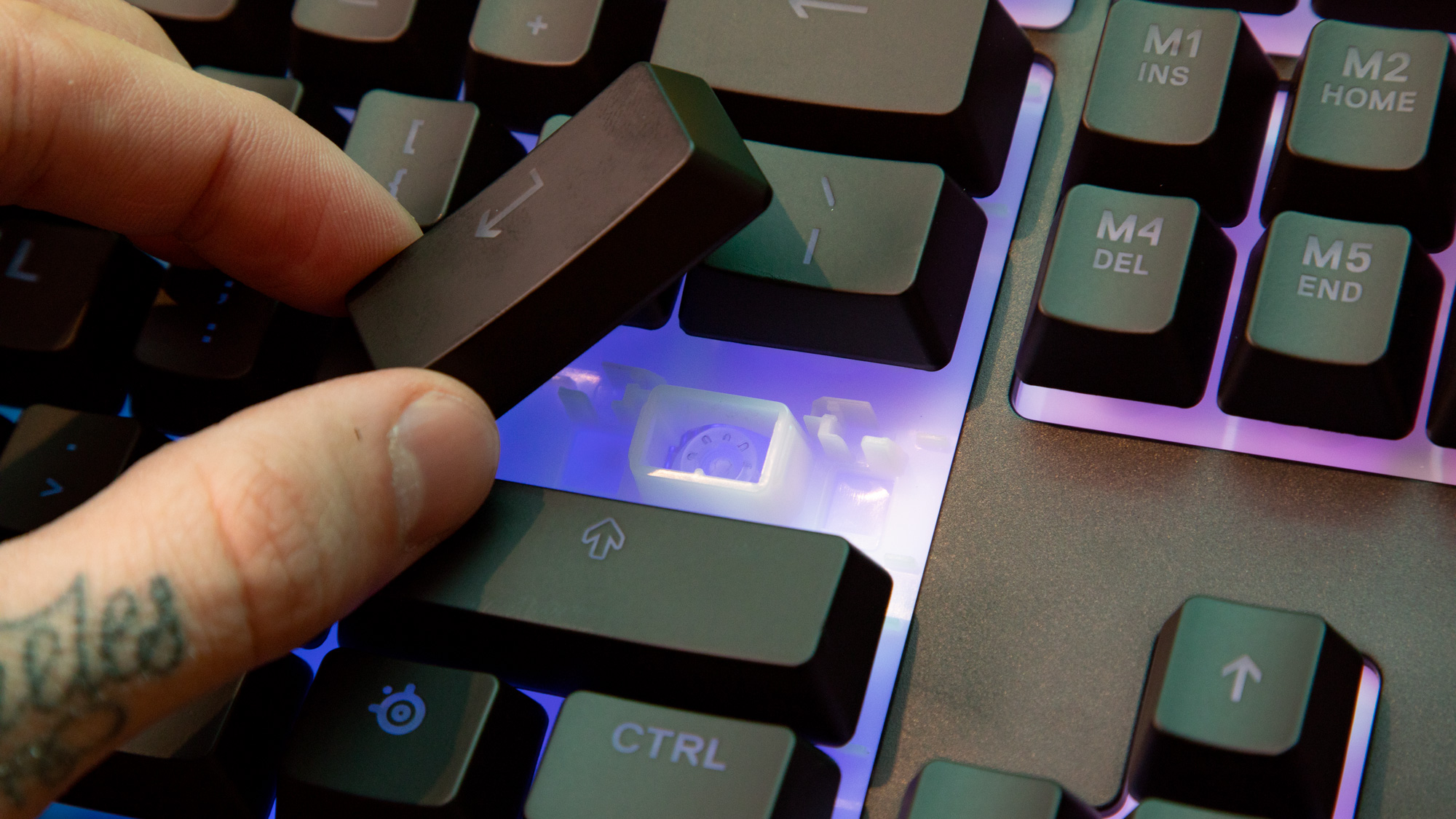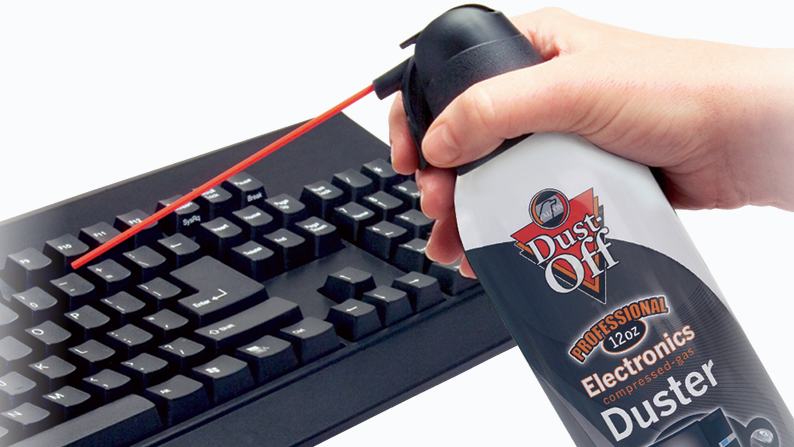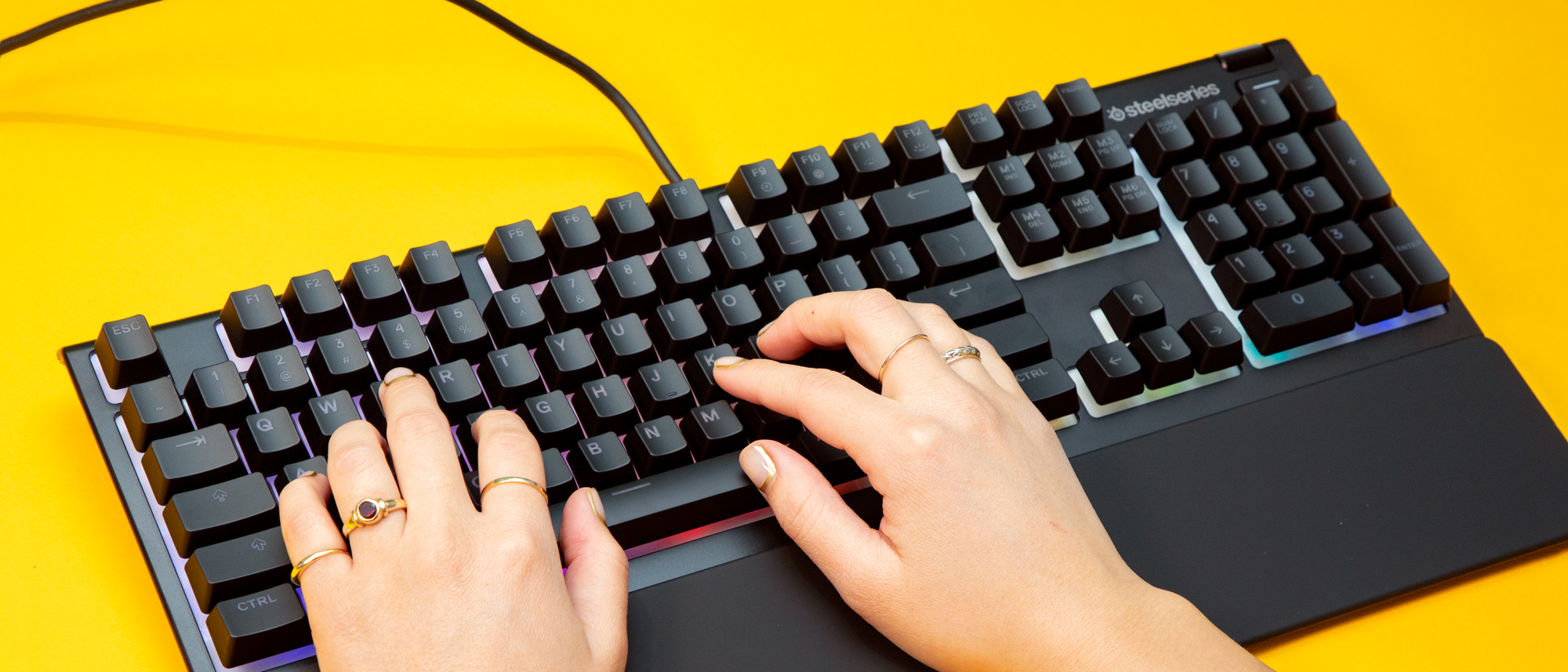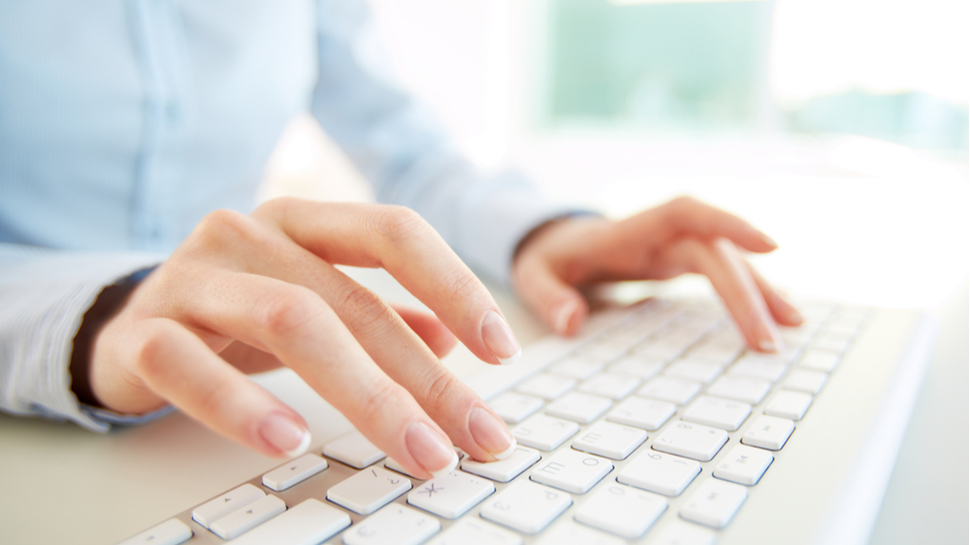How to clean your keyboard
It’s a dirty job, but someone’s gotta do it

Figuring out how to clean your keyboard may be the last thing on your mind when you’ve just bought a shiny new laptop or typing peripheral. But every PC user knows that dirt and grime can pile up overtime, and eventually you’ll have to face the inevitable.
With keyboards, it’s even trickier. If you don’t already know how to do it, it can be tough to clean your keyboard properly with all its moving and electrical parts – not to mention, its nooks and crannies. It isn’t just a simple scrub and wipe job. You also have to be careful not to cause irreversible damage to your device. That’s on top of the fact that dirt and sebum stains can be surprisingly hard to rub off.
So, we're here to give you a hand with a few useful tips. Here's the rundown on how to clean your keyboard, whether you’re only after the usual everyday upkeep or a proper deep clean.
Steps for how to clean your keyboard
- Unplug your keyboard, then flip it upside down to shake out any debris
- Use compressed air to get rid of any stubborn stragglers
- Pop the keycaps off and soak them in warm water
- Carefully scrub your keycaps and keyboard chassis
Tools and requirements
- Keyboard
- Isopropyl alcohol
- Compressed air or electric duster
- Toothbrush or other non-abrasive brush
- Cotton swab
- Keycap remover
Step by step guide
1. Removing debris

Everyday messes are unavoidable, especially if you’re used to snacking at your desk or having a meal while working. Unless you're really, really careful, your keyboard will see its share of food particles getting stuck under the keys. Here are a few things you can do when that happens:
1. Shake off loose debris
To remove loose debris, first unplug your keyboard from your computer or turn your laptop off. Then simply turn your keyboard upside down and carefully shake it until any trapped debris comes free. Make sure to shake your keyboard over a trash bag or somewhere easy to vacuum!
2. Use compressed air
If you’ve got debris stuck between the keys and a simple shake isn’t enough, use a can of compressed air to knock it loose. You can find compressed air in most grocery stores and several online retailers like Amazon.
Not a big fan of empty cans and metal waste? You can also opt for an electric duster to blow a stream of concentrated air under those keycaps. It's a bit more of an upfront investment, but it won't run out.
Get daily insight, inspiration and deals in your inbox
Sign up for breaking news, reviews, opinion, top tech deals, and more.
3. Pop those keycaps and use a cotton swab
Removing the keycaps from your board can be a little intimidating if you've never done it before. But the best keyboards are designed with cleaning and customization in mind, meaning the keycaps are meant to come off.
Note: certain laptops, like newer MacBook Air models, have special key switches that can be damaged if removed improperly. Before you pop any keycaps off, look up your laptop model and determine if the key caps can be safely removed.
Once your keyboard is considerably lighter sans key caps, you can apply a small amount of isopropyl alcohol to a cotton swab and run it between the rows of key switches to get rid of any debris that refuses to leave its hidey hole.
2. Cleaning spills and sticky keys

Beverage spills are even harder to deal with. But, don’t worry: just because you spilled liquid on your keyboard doesn’t mean you have to buy a new keyboard or laptop (as long as it still works).
1. Shake off liquid
Immediately turn off your laptop or unplug your keyboard if you spilled liquid on it to prevent damage to the internal components. Away from your other devices, turn your keyboard upside down, gently shake it, and keep it upside down for several minutes to get most of the liquid out. If your keyboard or laptop allows, prop it up at an angle over a paper towel to let the liquid spill out without having to hold it yourself.
2. Clean with a lint-free cloth
After you've drained most of the liquid, use a clean microfiber cloth to blot out any remaining droplets (or any clean absorbent, non-abrasive material like a paper towel or soft t-shirt, if nothing else is available). Then, depending on the severity of the spill, leave the keyboard to dry completely for at least 24 hours – but preferably, up to 48 hours if you can spare it. Do all this while keeping the keyboard in its upside-down position.
3. Deal with those sticky keys
If you spilled any liquid other than water, make sure to check each key to see if it’s sticky. To clean sticky keys, first take a picture of your keyboard. This way you won't have to remember where the keys go when you reassemble them. With your photo taken, gently and carefully pop off the keycaps with a keycap remover - or a butter knife or flathead screwdriver if you don't have a keycap remover, but be extra careful using these! Try to pull the keys straight up rather than prying them off at an angle. If you’ve got a laptop, check with the manufacturer to double check that those keycaps are removable.
With the keycaps removed, place them in a bowl of warm water to soak. This will loosen any dirt, grime, or liquid clinging to the sides.
Using a clean microfiber cloth or cotton swab and some isopropyl alcohol diluted with warm water, gently scrub the stains away. For hard to reach spots on the keycaps, consider using a soft-bristled toothbrush. Drain your keycaps, then leave them out to dry completely on a towel before you place them back on.
3. Weekly maintenance

Cleaning your keyboard weekly is the best way to keep it tidy and avoid having to spend significantly more time deep cleaning your keyboard. Doing so will also keep it free of harmful microbes and viruses that could get you sick. Just remember to unplug your keyboard before cleaning.
1. Remove debris
Shake off loose debris or use compressed air between the keys to remove pieces of food, dust, and other particles. You might also consider investing in a mini keyboard vacuum cleaner, which lets you do this step faster and more efficiently. There are also sticky cleaning goo gels available that can be very effective.
2. Clean the keys
Using a cotton swab or microfiber cloth, remove the dirt and oils from your keycaps and between the keys with isopropyl alcohol – doing this weekly should prevent buildup as well as kill harmful germs. Dry thoroughly with a lint-free cloth or allow it to air dry completely.
3. Use a keyboard cover
If you use a laptop, there's a good chance you can find a keyboard cover on Amazon or Best Buy to lay overtop the keys. This will prevent any crumbs or other debris from falling in between the keys, stopping the mess before it even starts. Plus, these are easily removeable, meaning you can just lift it up, walk to a trashcan, and shake it off. Easy as that.
4. Wash up before you sit down
Cleaning your hands is one of the best ways to clean your keyboard. Before you sit down to type away, give your hands a quick wash with soap and warm water to get rid of anything that may be on your fingers, including oils and grime. If washing your hands before you hop on the computer every time sound like an unreasonable chore, a bottle of hand sanitizer on your desk or in your laptop bag will go a very long way to keeping your keys nice and tidy.
Final thoughts
Cleaning your keyboard is important - not only for aesthetic purposes, but also for the lifespan of the tech you spent your money on.
Thankfully, keeping your keys clean generally isn't too involved (unless you spilled a sticky liquid all over it!) As long as you have some isopropyl alcohol, which you can find in grocery stores or online for a few bucks a bottle, and a cotton swab or microfiber cloth, you can get the job done. Compressed air, either from a disposable can or an electric duster, can be a huge help in getting rid of any food, pet hair, or other debris trapped beneath the keys.
And it's always a good idea to look for preventative measures before relying on a solution; regular keyboard maintenance is the way to go. If you use a laptop, throw a keyboard cover on and watch your dirty keyboard woes melt away.
Clean hands make a clean keyboard. Wash up with soap and warm water or rub a bit of hand sanitizer in before you type to keep dirt, grime, and oils off of your keys.
You might also like

Marcus Mears III is the Computing Reviews and Buying Guides Editor at TechRadar. He's been covering the latest in consumer tech for over 5 years, and he's gone hands-on with everything from the M2 MacBook Air to Valve's Steam Deck. Marcus is an advocate for Right to Repair laws and believes everyone can benefit from getting under the hood of your daily-driver tech. He'll also beat you in Texas Hold 'Em, too.